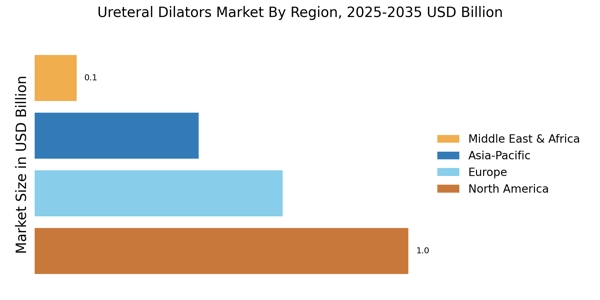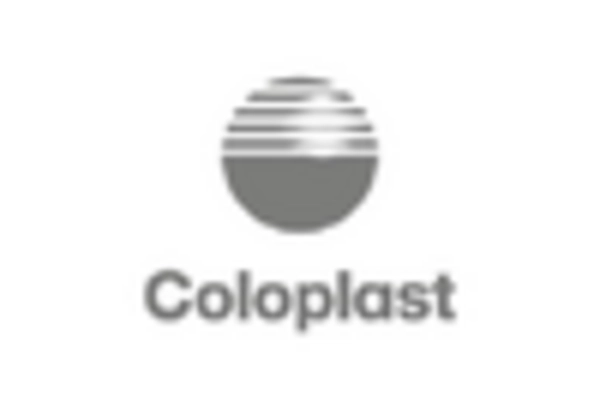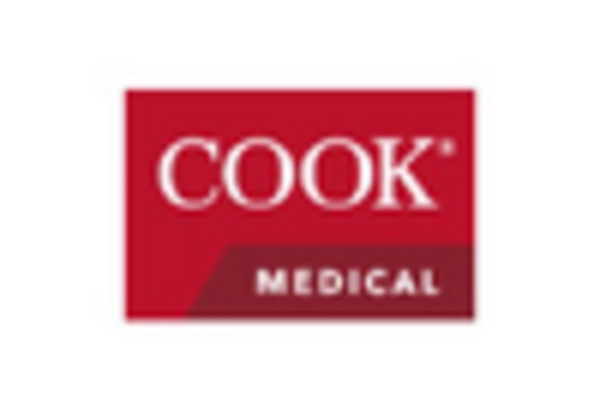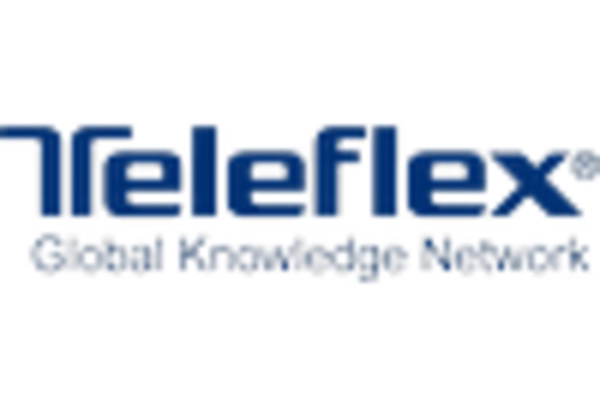Shift Towards Minimally Invasive Procedures
The Ureteral Dilators Market is witnessing a notable shift towards minimally invasive procedures, which are preferred for their reduced recovery times and lower complication rates. As patients increasingly seek less invasive treatment options, healthcare providers are adapting their practices to meet this demand. Ureteral dilators play a crucial role in these procedures, facilitating access to the urinary tract with minimal disruption to surrounding tissues. This trend is supported by a growing body of evidence suggesting that minimally invasive techniques lead to better patient outcomes. Consequently, the Ureteral Dilators Market is likely to benefit from this paradigm shift, as more practitioners incorporate these tools into their surgical repertoire.
Increasing Incidence of Urological Disorders
The rising incidence of urological disorders is a critical driver for the Ureteral Dilators Market. Conditions such as kidney stones, ureteral strictures, and urinary tract infections are becoming more prevalent, necessitating effective treatment options. According to recent data, the prevalence of kidney stones has been reported to affect approximately 10% of the population at some point in their lives. This growing patient population requires interventions that often involve the use of ureteral dilators. As healthcare systems strive to provide effective solutions for these disorders, the demand for ureteral dilators is expected to increase. This trend indicates a significant opportunity for manufacturers and healthcare providers within the Ureteral Dilators Market.
Aging Population and Healthcare Accessibility
The aging population is a significant factor influencing the Ureteral Dilators Market. As individuals age, they become more susceptible to urological disorders, which often require interventions involving ureteral dilators. The demographic shift towards an older population is expected to increase the demand for urological procedures. Additionally, improved healthcare accessibility in various regions is facilitating earlier diagnosis and treatment of urological conditions. This combination of factors is likely to drive the growth of the Ureteral Dilators Market, as healthcare providers seek to address the needs of an aging demographic. The focus on enhancing patient care and outcomes further underscores the importance of ureteral dilators in modern urological practice.
Technological Innovations in Ureteral Dilators
The Ureteral Dilators Market is experiencing a surge in technological innovations that enhance the efficacy and safety of procedures. Advanced materials and designs are being developed, which improve the flexibility and durability of dilators. For instance, the introduction of hydrophilic coatings has been shown to reduce friction during insertion, thereby minimizing patient discomfort. Furthermore, the integration of imaging technologies, such as ultrasound and fluoroscopy, allows for better visualization during procedures, leading to improved outcomes. As these technologies continue to evolve, they are likely to attract more healthcare providers to adopt ureteral dilators, thereby expanding the market. The increasing demand for precision in urological interventions further supports this trend, suggesting a robust growth trajectory for the Ureteral Dilators Market.
Rising Awareness and Education on Urological Health
Rising awareness and education regarding urological health are pivotal in shaping the Ureteral Dilators Market. Increased public and professional knowledge about urological disorders has led to more individuals seeking medical advice and treatment. Campaigns aimed at educating the population about the symptoms and risks associated with urological conditions are contributing to higher diagnosis rates. As patients become more informed, they are more likely to pursue interventions that involve ureteral dilators. This heightened awareness is expected to drive demand within the Ureteral Dilators Market, as healthcare providers respond to the growing need for effective treatment options. The emphasis on patient education is likely to play a crucial role in the future growth of this market.


















Leave a Comment